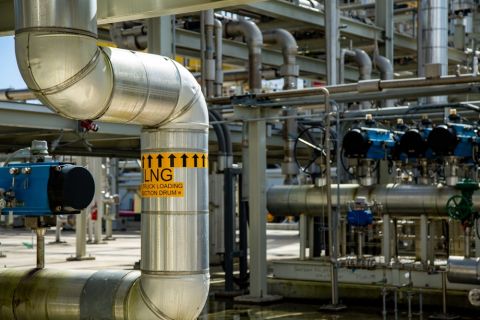Presented by:
While it’s inevitable that another basin snatches a ray of limelight from the Permian Basin from time to time, probably no one expected a rare run on Utah’s Uinta Basin, where M&A has suddenly been heating up.
Maybe Utah was due. The number of rigs in Utah has nearly doubled from six last April to 13 as of April 1, according to the Baker Hughes rig count.
For perspective, the last major transaction involving the Uinta when Ovintiv Inc. (then Encana Corp.) purchased Newfield Exploration Co.’s assets in February 2019 for $5.5 billion and the assumption of $2.2 billion in debt.
Times have changed but so have prices. Crescent Energy Co. on March 30 closed its acquisition of Uinta Basin assets in Utah previously owned by EP Energy for $690 million, a final number that was about 15% lower than the originally announced $815 million price tag.
| Buyer/Seller | Amount ($MM) | Acreage | Production |
| Crescent Energy Co. | $690 | 145,000 | 30,000 boe/d (65% liquids) |
| Greylock Energy | N/A | 290,000 | 1,000 bbl/d oil; 1,500 bbl/d NGL |
| Ovintiv (possibly divestiture) | N/A | 207,000 | 13,000 boe/d |
Houston-based Crescent Energy in February said it would buy the Uinta Basin assets in an all-cash transaction from Verdun Oil Co. II LLC, an EnCap Investments LP-backed firm formed in 2015.
The Uinta acquisition included approximately 145,000 contiguous net acres in Utah, producing about 30,000 boe/d, roughly 65% oil. EP Energy had previously owned the assets, according to the Crescent Energy release on Feb. 16.
In August 2021, EnCap Investments had agreed to take over EP Energy’s assets in the Eagle Ford and Uinta basins in a $1.5 billion deal, less than a year after EP Energy emerged from a bankruptcy process that handed control to its creditors.
However, U.S. antitrust regulators had threatened to block EnCap’s takeover of the EP Energy assets, citing concerns about the private equity firm’s dominance in the Uinta shale play.
On March 25, Reuters reported that the U.S. Federal Trade Commission (FTC) approved EnCap’s $1.5 billion takeover of EP Energy on the condition that the firm sell EP Energy’s entire Utah oil business.
The FTC said the deal without the sale of the assets in Utah would have left just three significant producers that sell Uinta Basin crude oil to refiners in Salt Lake City and led to higher prices for consumers.
Utah Oil, Gas Production, 2017-2021 |
||
| Year | Oil (bbl) | Gas (Mcf) |
| 2021 | 35,014,155 | 239,042,296 |
| 2020 | 31,000,987 | 242,582,202 |
| 2019 | 36,933,430 | 272,993,698 |
| 2018 | 37,116,941 | 295,825,783 |
| 2017 | 34,437,937 | 315,197,367 |
Caerus Oil and Gas LLC is also reportedly exploring a sale that could value the private equity-owned natural gas producer at more than $2.5 billion, including debt, people familiar with the matter said on March 25. The company owns E&P assets centered in the Piceance Basin of Colorado and the Uinta Basin of Utah.
The company received an acquisition offer at the end of last year and plans to launch a sale process, said the sources. They cautioned that no sale is certain and spoke on condition of anonymity to discuss private information.
Caerus is owned by investment firms Oaktree Capital Management, Anschutz Investment Co. and Old Ironsides Energy. The Denver-based company owns E&P assets, pipelines and mineral rights in the basins.
Caerus, which also bought Occidental Petroleum Corp.’s Uinta assets in 2020, produces natural gas from around 680,000 net acres, according to its website.
Also in March, Greylock Energy acquired roughly 290,000 gross acres and other assets in the Uinta and Green River basins of Utah and Wyoming from an undisclosed seller.
In an exclusive interview, Greylock CEO Kyle Mork said the expansion, which includes about 1,400 producing wells, will boost the company’s oil production from about 1,000 bbl of oil per month in its conventional Appalachia assets to 1,000 bbl/d.
“It’s almost a thirtyfold increase, and then the wells also produce a significant amount of NGL, call it 1,500 bbl/d or so of NGL,” Mork said, adding he could not disclose the price of the deal.
Mork said the asset was attractive for several reasons, including its exposure to liquids.
“We like geographically where it sits. In recent years, we’re taking a pretty big discount to Henry Hub [prices] and these assets are really kind of the opposite. They generally are trading flat or even at a premium to Henry Hub because a lot of this gas ultimately gets exposure to the West Coast and even to California.”
In addition to the new assets, Greylock will also retain about 60 employees from the seller, Mork said.
While financial details weren’t disclosed, he said that the deal was negotiated on a PDP value basis and did not ascribe any value to upside potential.
Mork anticipated that it will continue to transact in more PDP-heavy deals.
And finally, Ovintiv was on the lookout to hire an investment bank to consider options for its acreage in the Uinta, as it looks to cash in on a boom in energy prices to cut debt, three sources familiar with the matter told Reuters on Feb. 22.
A full or partial sale would be among the options for Ovintiv, one of the top producers in the Uinta Basin, the sources said, adding that a sale of the assets could fetch around $1 billion.
No final decision has been made about the assets, and Ovintiv could still decide to retain them, the sources cautioned. They requested anonymity as the discussions are confidential.
An Ovintiv spokesperson said the company does not comment on potential or rumored acquisition or divestiture activity.
Ovintiv’s assets spanned around 207,000 net acres in central Utah and had production of around 13,000 boe/d as of its 2020 annual report.
Recommended Reading
Laredo Oil Subsidiary, Erehwon Enter Into Drilling Agreement with Texakoma
2024-03-14 - The agreement with Lustre Oil and Erehwon Oil & Gas would allow Texakoma to participate in the development of 7,375 net acres of mineral rights in Valley County, Montana.
JMR Services, A-Plus P&A to Merge Companies
2024-03-05 - The combined organization will operate under JMR Services and aims to become the largest pure-play plug and abandonment company in the nation.
New Fortress Energy Sells Two Power Plants to Puerto Rico
2024-03-18 - New Fortress Energy sold two power plants to the Puerto Rico Electric Power Authority to provide cleaner and lower cost energy to the island.
SilverBow Rejects Kimmeridge’s Latest Offer, ‘Sets the Record Straight’
2024-03-28 - In a letter to SilverBow shareholders, the E&P said Kimmeridge’s offer “substantially undervalues SilverBow” and that Kimmeridge’s own South Texas gas asset values are “overstated.”
Enerplus Increases Quarterly Cash Dividend
2024-02-23 - Enerplus Corp. increased its dividend 8% to US$0.065 (CA$0.088) per share.







